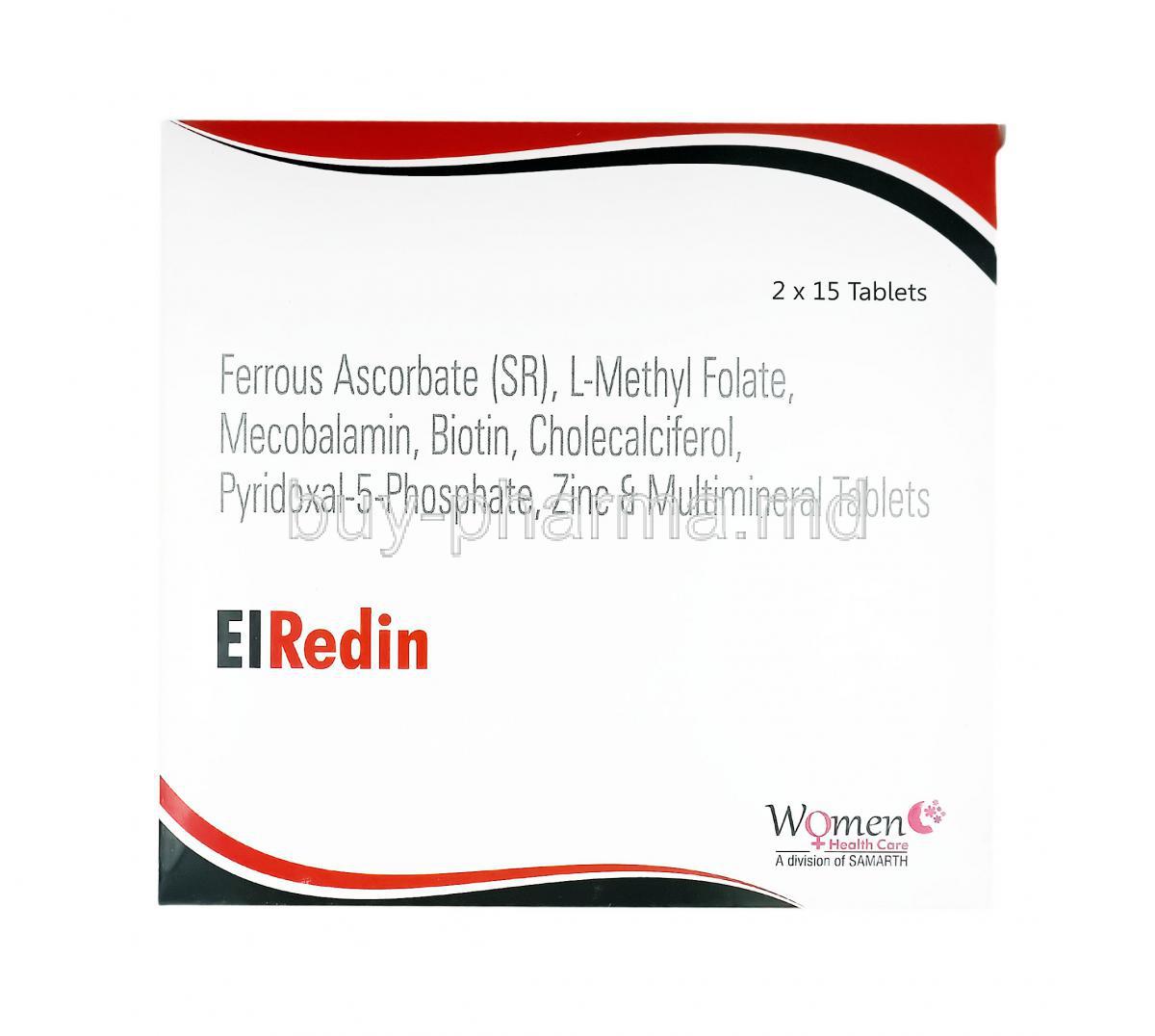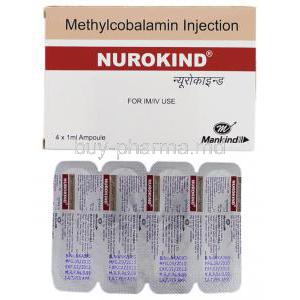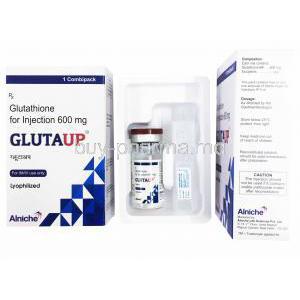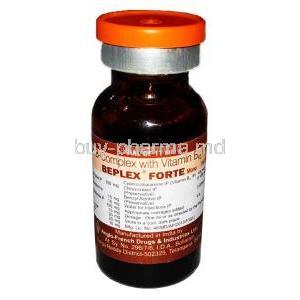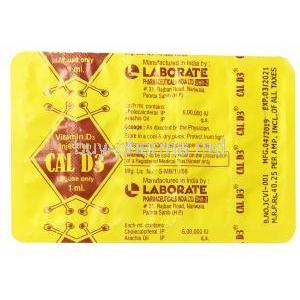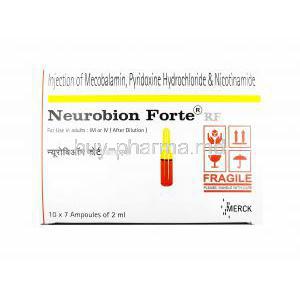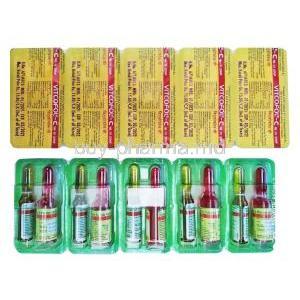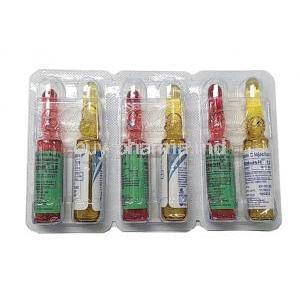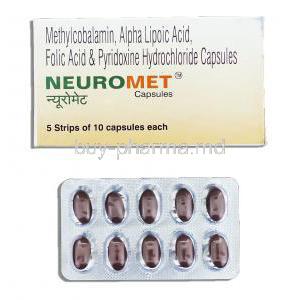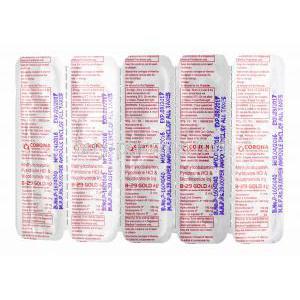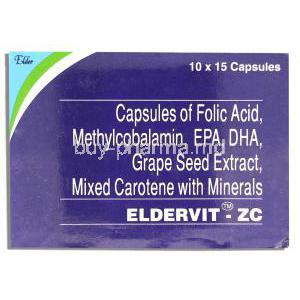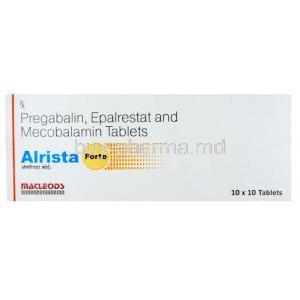Elredin
- I. Introduction to Elredin
- II. Composition of Elredin
- III. How Elredin Works
- IV. Uses of Elredin
- V. Off-Label Uses of Elredin
- VI. Dosage and Administration of Elredin
- VII. Side Effects of Elredin
- VIII. Important Precautions When Using Elredin
- IX. Contraindications and Warnings
- X. Interactions with Elredin
- XI. Special Considerations in Administration
- XII. Overdosage of Elredin
- XIII. Storage and Handling of Elredin
I. Introduction to Elredin
A. Overview of Elredin
Elredin is a known pharmaceutical agent that is highly regarded for its distinct therapeutic benefits. This medication falls under the category of pharmaceuticals. Is recognized for its ability to significantly improve patient health and overall well-being. Elredin has been carefully formulated as a compound with a specific medical objective in mind. Its exceptional characteristics and effectiveness in providing therapy make it an outstanding component in medicine.
B. Historical Background and Development
Elredin's journey is deeply rooted in a history that spans many decades. Its origins can be attributed to the dedication to finding creative solutions for urgent medical challenges.
Through years of research and advancements in pharmaceutical technology, this pioneering medication has undergone significant refinement. Transitioning from an idea to a tangible treatment highlights the community's perseverance.
C. Purpose of the Medication
Elredin goes beyond being a medication; it represents a significant purpose crucial in managing specific medical conditions. Its main goal is to offer relief and alleviate the symptoms related to a particular range of disorders.
By focusing on the causes of these conditions, Elredin aims to improve patients' overall well-being, enhance their quality of life, and ultimately contribute towards achieving optimal health outcomes.
II. Composition of Elredin
A. Active Ingredients
Elredin is a medication that contains ferrous fumarate, folic acid, and vitamin C 1. Ferrous fumarate is a type of iron supplement that provides elemental iron, an essential mineral necessary for producing red blood cells and the transportation of oxygen throughout the body 1. Folic acid is a B vitamin essential for producing red blood cells and DNA 1. Vitamin C is an antioxidant that helps protect cells from damage and is necessary for the growth, development, and repair of body tissues 1.
B. Chemical Properties and Structure
Understanding how Elredin works and affects our bodies relies heavily on its chemical properties and molecular structure. We must dive into its intricate chemical composition details to truly grasp its mechanisms. Elredin has a molecular structure that gives it distinctive pharmacological properties. The interplay between its chemical bonds and functional groups determines its interactions with targets.
III. How Elredin Works
A. Mechanism of Action
The way Elredin works to provide benefits to the human body is explained through a complex set of biochemical processes. These processes specifically target cellular pathways and receptors. Understanding how Elredin functions emphasizes its ability to precisely regulate physiological functions, ultimately resulting in the desired therapeutic effects.
B. Pharmacodynamics
Pharmacodynamics investigates how a medication influences the body on a cellular level. Regarding Elredin, its pharmacodynamics involve biochemical processes and interactions with receptors. It is crucial to comprehend the pharmacodynamics of Elredin to anticipate its effects and any possible interactions it may have with other medications or substances.
C. Pharmacokinetics
Understanding how Elredin moves through the body is what pharmacokinetics is all about. It involves studying how the drug is absorbed, distributed, metabolized, and eliminated.
This aspect of pharmacology helps us understand factors like how much of the medication can be used by the body (bioavailability) how long it stays in the body (half-life), and how often it should be taken. Having a grasp of Elredin pharmacokinetics is essential for tailoring dosages, and treatment plans to suit each patient's needs.
IV. Uses of Elredin
A. Primary Indications
It is used to treat iron deficiency anemia and vitamin B12 deficiency 1. Ferrous fumarate is a type of iron supplement that provides elemental iron, an essential mineral necessary for producing red blood cells and the transportation of oxygen throughout the body 1. Folic acid is a B vitamin that is essential for the production of red blood cells and DNA 1. Vitamin C is an antioxidant that helps protect cells from damage and is necessary for the growth, development, and repair of body tissues 1.
B. Spectrum of Efficacy
Although Elredin is mainly prescribed for conditions, it has a broader range of effectiveness. It can potentially impact related or similar disorders, expanding its usefulness in clinical treatments. This versatility makes Elredin valuable in therapeutics as it can address medical needs.
C. Comparison with Similar Medications
When healthcare professionals compare Elredin to medications, they gain valuable insights into its distinct features, benefits, and possible limitations. By examining its characteristics alongside those of similar drugs, they can make well-informed decisions about treatment options. Analyzing these comparisons helps customize plans according to individual patient needs, ultimately improving clinical results.
V. Off-Label Uses of Elredin
A. Exploring Non-Approved Uses
Elredin has attracted attention for its uses beyond what it was approved for. People have been exploring the potential of Elredin in areas where it hasn't been traditionally used, leading to innovative treatment options. Healthcare professionals and researchers are now venturing into these territories to make the most of Elredin's therapeutic capabilities in unique ways.
VI. Dosage and Administration of Elredin
A. Recommended Dosages
A medical professional should determine the dosage and administration of Elredin. The recommended dosage of ferrous fumarate for the treatment of iron deficiency anemia in adults is 65-200 mg daily in 2-3 divided doses 1. For prevention, the recommended dosage is 65 mg daily 1. Elderly patients should take 15-50 mg daily 1. For children, the recommended dosage is 3-6 mg/kg daily in 3 divided doses with a maximum of 200 mg daily 1.
Please note that the dosage and administration of Elredin may vary depending on the patient’s age, weight, medical history, and other factors. It is important to consult a medical professional before taking Elredin or any other medication.
VII. Side Effects of Elredin
A. Common Side Effects
The most common side effects of Elredin include upset stomach, constipation, diarrhea, nausea, and vomiting 1. These side effects are usually mild and go away on their own. However, if you experience any severe or persistent side effects, such as stomach pain, black or tarry stools, or difficulty breathing, you should contact your doctor immediately 1.
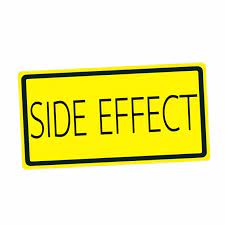
B. Managing Side Effects
Effectively dealing with the consequences is crucial to ensuring that patients get the best results from their Elredin treatment. Healthcare professionals use methods like adjusting the dosage, providing supportive care, and using medications to tackle these side effects. Educating patients about what to expect and maintaining communication are vital in managing side effects and ensuring that patients stick to their treatment plans.
VIII. Important Precautions When Using Elredin
A. General Precautions
Before starting Elredin therapy, healthcare professionals need to follow guidelines to reduce risks and ensure well-being.
These guidelines cover patient assessments, potential drug interactions, and monitoring procedures. By adhering to these precautions, healthcare providers can improve the overall safety of Elredin therapy.
B. Precautions for Specific Conditions
Certain medical conditions or characteristics of patients may require care when using Elredin. These individualized precautions are designed to address risks and enhance the effectiveness of treatment for individuals with unique healthcare requirements. Personalizing precautions according to a patient's profile is essential to responsible medical practice.
C. Monitoring and Follow-up
Continuous monitoring and regular checkups are aspects of Elredin therapy. It is essential for healthcare providers to consistently evaluate how patients respond to the treatment, any side effects they may experience, and their adherence to the prescribed regimens. This ensures that the medication remains safe and effective throughout their treatment journey. Healthcare professionals have a role in implementing comprehensive monitoring and follow-up procedures to provide continuous support to patients during their treatment.
IX. Contraindications and Warnings
A. Absolute Contraindications
Elredin, despite being a treatment, does have its limitations. There are situations in which this medication is strictly prohibited due to safety concerns. It is crucial to adhere to these contraindications to ensure patient safety;
1. Patients who have exhibited hypersensitivity or allergic reactions (such as anaphylaxis) to any inactive ingredients in Elredin.
2. Individuals with a history of severe allergic reactions (anaphylaxis) to similar pharmaceutical compounds.
3. Concurrent use of medications or therapeutic agents that are known to interact negatively with Elredin. Identifying and following these contraindications is essential for protecting the well-being of patients.
B. Warnings and Advisory Notices
Elredin comes with a series of warnings and advisory notices providing crucial cautionary information for healthcare providers and patients. These warnings cover the risks that may arise from prolonged use of Elredin.
- Additionally, they address side effects on the central nervous system (CNS), such as dizziness and sedation, and the risk of gastrointestinal disturbances and hepatotoxicity.
- Healthcare providers must educate patients about these risks and closely monitor them to detect and manage any potential adverse effects.
X. Interactions with Elredin
A. Drug-Drug Interactions
How Elredin interacts with drugs can have significant implications for both patient safety and the effectiveness of the treatment. It is crucial to understand these interactions to prevent any outcomes.
Some key things to consider include:
- The a possibility that Elredin might enhance or inhibit the effects of medications when taken together.
- Certain types of drugs, like cytochrome P450 enzyme inhibitors or inducers, are known for their interactions with Elredin (you can refer to drug-specific information for more details).
- Adjusting doses or monitoring the therapy closely may be necessary when combining Elredin with medications. Healthcare providers must have an understanding of potential drug-drug interactions to provide optimal care for patients.
B. Drug-Food Interactions
- How Elredin interacts with our food can affect how much of it our bodies can absorb and how well it works as a treatment. It's essential to be aware of food-drug interactions when taking Elredin, including:
- How food can impact the rate at which Elredin is absorbed into the bloodstream and the highest levels it reaches.
- Certain foods or nutrients might interfere with how our bodies process Elredin.
- Recommendations on when to take Elredin in meals to maximize its therapeutic effects.
Educating patients about these interactions is crucial, ensuring they get the most out of their medication.
C. Drug-Disease Interactions
Underlying conditions can influence Elredin's effectiveness and safety. Understanding how pre-existing diseases can impact the way this medication works is crucial.
Some critical factors to consider include:
- Conditions like liver disease or kidney problems may require adjustments in dosage or careful use.
- There is a possibility of symptoms related to diseases worsening or improving while undergoing Elredin therapy.
- The significance of conducting medical assessments to identify potential interactions, between the medication and existing health issues.
The importance of treatment plans and diligent monitoring when dealing with patients who have other medical conditions.
XI. Special Considerations in Administration
A. Administration to Elderly Patients
Elderly patients are people with specific characteristics regarding how medications work in their bodies. Healthcare providers need to keep the following things in mind when prescribing Elredin to this population;
1. Age-related changes in how drugs are processed and eliminated from the body may require dosage adjustments.
2. Elderly patients may be more sensitive to side effects affecting the nervous system, so careful monitoring is essential.
3. Assessing function and frailty is crucial before deciding if Elredin is appropriate for an elderly patient.
- Following these considerations is vital to ensure that Elredin is safe and effective, for patients.
B. Use in Pregnant Women and Nursing Mothers
The use of Elredin in women and nursing mothers requires careful consideration due to potential risks to the fetus and newborn. Essential factors to consider include;
1. The possibility of effects during the first trimester.
2. The transfer of Elredin into breast milk and its potential impact on the nursing baby.
3. Collaborative decision-making with lactating patients involves thoroughly evaluating risks versus benefits while considering alternative treatment options.
4. Striking a balance between the mother's health needs and the potential risks to the developing fetus or nursing baby is crucial.
C. Administration to Children
The administration of Elredin to patients requires special attention because medications work differently in children than in adults. When dealing with patients, it is essential to consider factors such as calculating the appropriate dosage based on age, weight or body surface area. Additionally, children may. Eliminate drugs differently than adults. It's crucial to monitor for any side effects or adverse reactions specific to their age group and take action if necessary. To ensure the effective use of Elredin in children, it is essential to provide customized dosing and closely supervise their treatment.
XII. Overdosage of Elredin
A. Signs and Symptoms of Overdose
Accidentally or deliberately taking too much Elredin can result in various adverse effects that must be identified promptly.
Overdose signs and symptoms may include
- central nervous system (CNS) depression characterized by extreme drowsiness and impaired thinking ability.
- Cardiovascular problems, like a slow heart rate (bradycardia) or irregular heart rhythms (arrhythmias).
- Gastrointestinal discomfort could lead to feelings of nausea, vomiting, or diarrhea. It's crucial to recognize these signs of overdose to intervene promptly.

B. Immediate Actions and Treatment
If someone takes much Elredin, healthcare providers must take immediate action and use treatment strategies to reduce harm and keep the patient safe. These interventions include washing out the stomach or giving activated charcoal to prevent more medication from being absorbed. Providing care that addresses symptoms and offers support, such as monitoring cardiovascular functions, is essential. If any antidotes are available and appropriate, they may also be administered. The key is for healthcare providers to act quickly and effectively when dealing with an overdose of Elredin.
C. Long-Term Management
The ongoing care and monitoring after an Elredin overdose involve checking for any complications and ensuring the patient's overall health is taken care of. This phase includes scheduling follow-up appointments to assess any lingering effects and monitor for any late-onset complications that may arise. In cases where intentional overdose is linked to underlying health issues, patients may be referred to psychiatric or addiction services for further support. Educating the patient about medication safety and adherence is also crucial in preventing overdose incidents. The main goal of long-term management is to support the patient's recovery while minimizing the risk of another overdose episode.
XIII. Storage and Handling of Elredin
A. Storage Conditions
It is crucial to store Elredin to ensure its stability and effectiveness. To maintain its quality, please follow these guidelines:
- Store Elredin at room temperature, between 20°C to 25°C or 68°F to 77°F.
- Avoid exposing the medication to excessive heat, moisture, or direct sunlight.
- Always keep the container closed to prevent moisture from getting in. By adhering to these storage conditions, you can preserve Elredin is integrity.
B. Shelf Life and Expiry
Elredin, like any other medication, has a designated period during which its safety and effectiveness can be assured. It is essential for healthcare professionals and patients to remember the following guidelines: Always check the expiration date mentioned on the medication packaging and avoid using Elredin beyond that date. Make sure to dispose of any unused Elredin properly following the local regulations ). If you are unsure how to dispose of it, consult with a pharmacist or healthcare provider for proper guidance. It is crucial to remain vigilant in monitoring the shelf life of Elredin and promptly disposing of expired medication.
C. Safe Handling and Disposal Procedures
It's essential to take precautions when it comes to handling and getting rid of Elredin to avoid any accidental ingestion or environmental harm. Here are some guidelines to follow:
1. keep Elredin out of the reach of children and pets.
2. Don't share your medication with others, even if they have symptoms.
3. Always adhere to regulations and guidelines for disposing of unused or expired Elredin. This usually involves using designated medication disposal programs or facilities.
4. Responsible handling and disposal play a role in ensuring medication safety and protecting the environment. Remember, taking these steps is crucial for both our health and the well-being of our surroundings.

